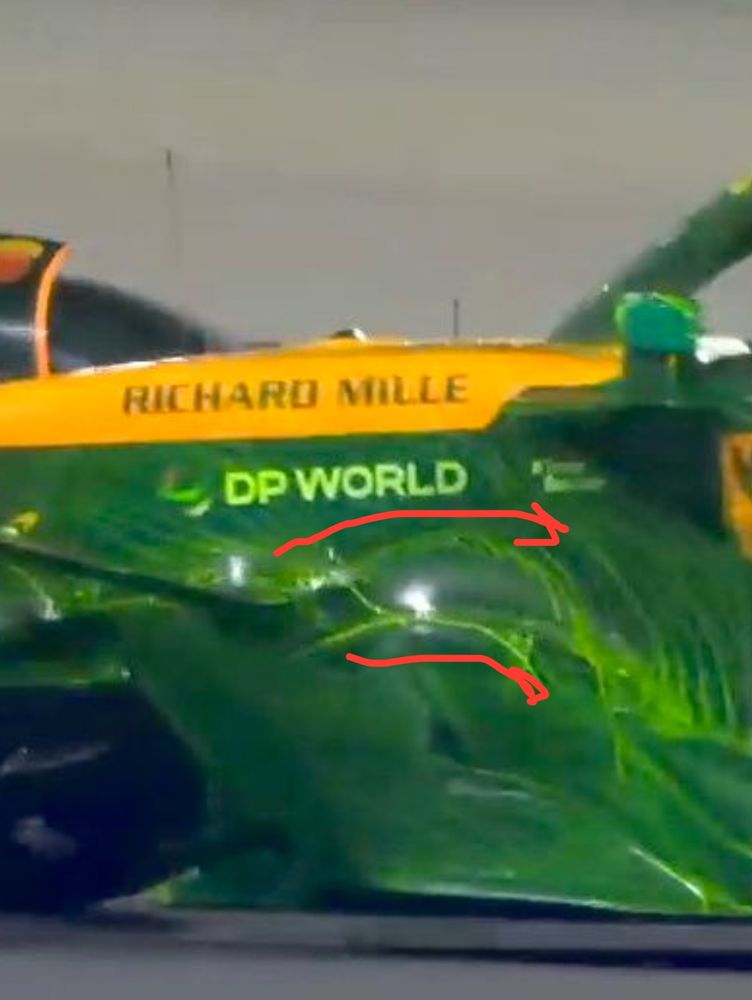
Flow Vis image from Floorent Gooden on instagram.


Flow Vis image from Floorent Gooden on instagram.













Red arrow shows that the aero neutral suspension arms aren't as down washing as some might expect. This shows an upwards trajectory after the rear leg from the flow coming off the front wing. We do see some downward deflection from the flow UNDER the trailing arm.

Red arrow shows that the aero neutral suspension arms aren't as down washing as some might expect. This shows an upwards trajectory after the rear leg from the flow coming off the front wing. We do see some downward deflection from the flow UNDER the trailing arm.













